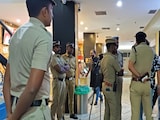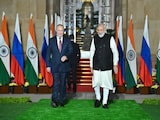- Peggy Whitson shared photos from the ISS Cupola, highlighting its panoramic Earth views
- The Cupola module offers a 360-degree view of Earth and was installed on the ISS in 2010
- The Ax-4 mission crew includes Peggy Whitson, Group Captain Shubhanshu Shukla, and others
NASA astronaut Peggy Whitson, aboard the International Space Station with Group Captain Shubhanshu Shukla, was photographed inside the Cupola, a seven-windowed module famed for its stunning panoramic views of Earth.
Floating in the softly lit dome with Earth sprawling behind her, the Ax-4 mission commander shared a post from orbit on X, writing, "Every moment in the Cupola feels like a gift, it's hands down the most stunning view in the universe!"
The Cupola has become one of the ISS' most beloved features since its installation in 2010, offering astronauts an unmatched 360-degree panorama of our planet.
Ms Whitson is currently leading the all-international Ax-4 mission aboard the ISS, joined by Indian Gaganyatri Group Captain Shubhanshu "Shux" Shukla, Polish astronaut Slawosz "Suave" Uznanski-Wisniewski, and Hungarian spaceflight participant Tibor Kapu. The team arrived at the station on June 26 and has since completed days of research, exploration, and international collaboration.
Peggy Whitson, a veteran NASA astronaut and the first woman to command the ISS, has offered followers a front-row seat to the crew's experience. In an earlier post featuring Earth's blue curve and swirling clouds, she wrote, "There are no bad views from the [Space Station]."
Posting another image, she wrote, "Today's view from the @Space_Station. Earth is absolutely stunning!"
Group Captain Shukla, on his 14-day mission, has taken part in several significant experiments aboard the space station. His research includes:
- Myogenesis Investigation - Studying how microgravity accelerates muscle degeneration.
- Micro Algae Experiments - Exploring algae as a potential resource for food, oxygen, and biofuel in deep space missions.
- Sprouts Project - Investigating seed germination and genetic changes in crops grown in space.
- STEM Demonstrations - Recording experiments to show the differences between physical and chemical changes in microgravity.















